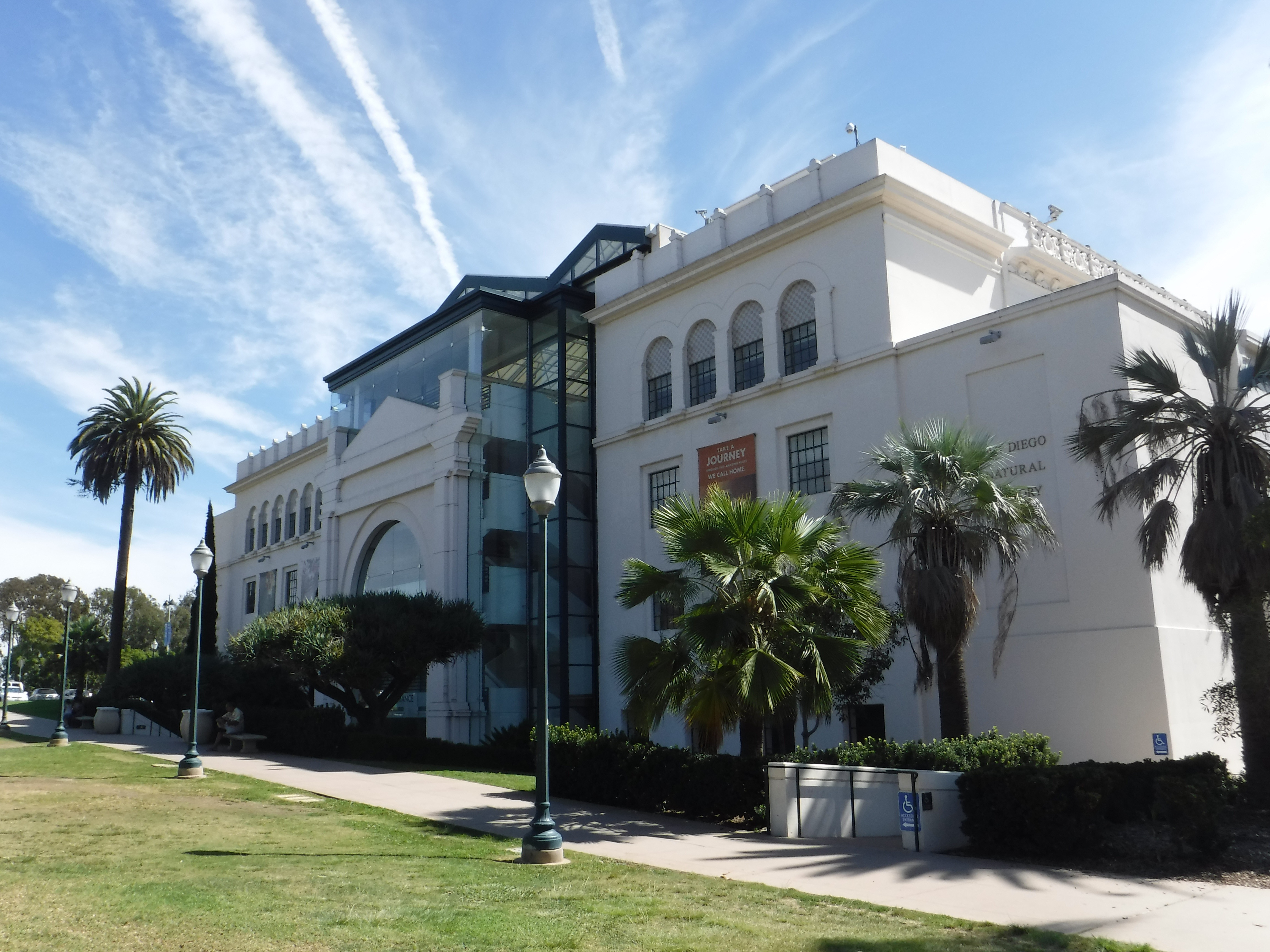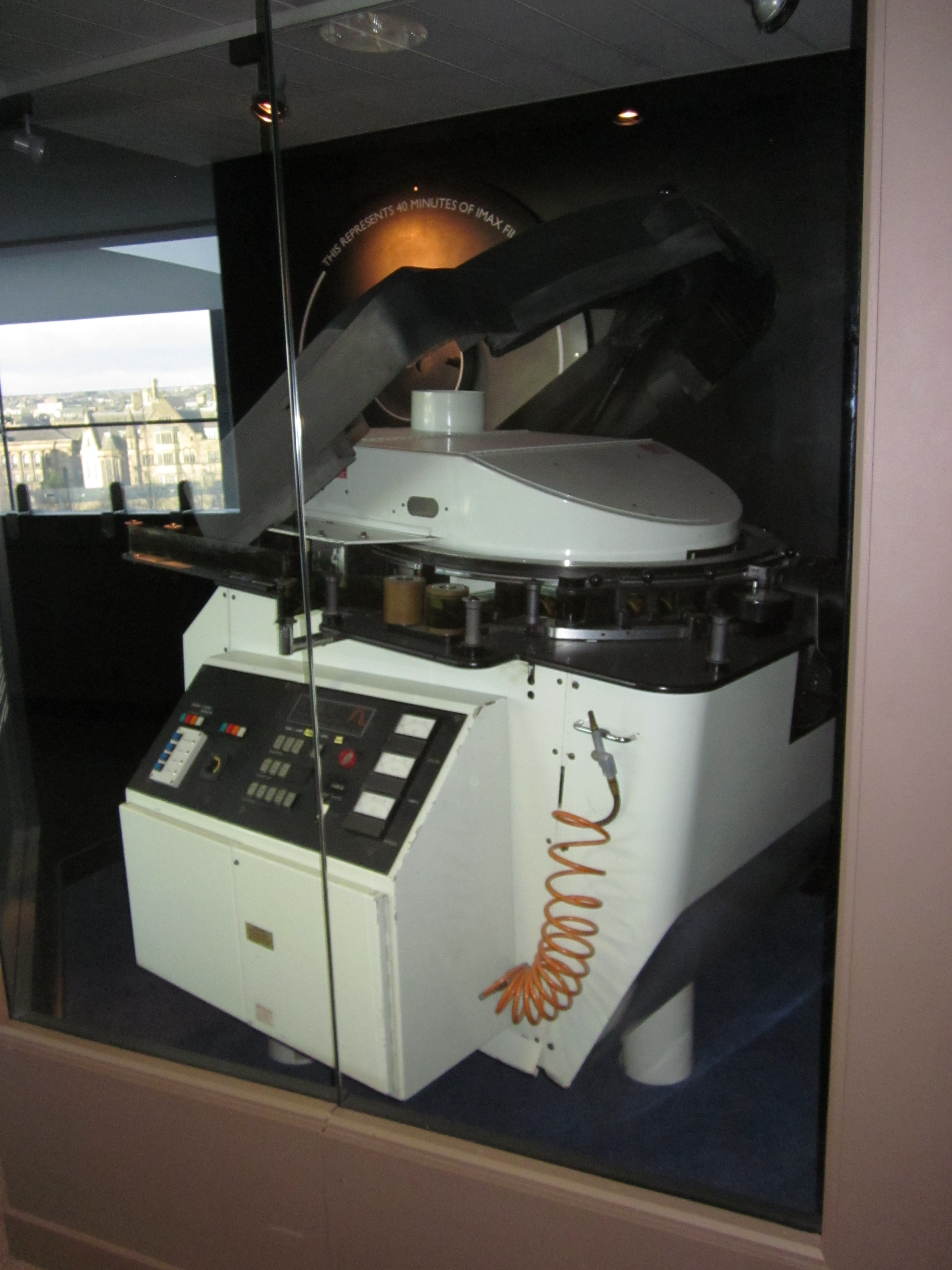|
Reuben H. Fleet Space Theater And Science Center
The Fleet Science Center (previously the 'Reuben H. Fleet Science Center') is a science museum and planetarium in Balboa Park, located in San Diego, California. It is at the east end of the El Prado Drive walkway, next to the Bea Evenson Fountain and plaza in central Balboa Park. Established in 1973, it was the first science museum to combine interactive science exhibits with a planetarium and an IMAX Dome (OMNIMAX) theater, setting the standard that most major science museums follow today. History The facility is named for aviation pioneer Reuben H. Fleet, who founded the U.S. Air Mail service. Fleet's San Diego-based company, Consolidated Aircraft, built several of the famous aircraft of World War II, including the B-24 Liberator and PBY Catalina. Fleet and his family made the initial gift which established the Science Center. Planetarium Throughout the 1960s, the San Diego Hall of Science (now known as the San Diego Space and Science Foundation) was planning a new planetarium ... [...More Info...] [...Related Items...] OR: [Wikipedia] [Google] [Baidu] |
Balboa Park (San Diego)
Balboa Park is a historic urban cultural park in San Diego, California, United States. In addition to open space areas, natural vegetation zones, green belts, gardens, and walking paths, it contains museums, several theaters, and the San Diego Zoo. There are also many recreational facilities and several gift shops and restaurants within the boundaries of the park. Placed in reserve in 1835, the park's site is one of the oldest in the United States dedicated to public recreational use. Balboa Park is managed and maintained by the Parks and Recreation Department of the City of San Diego. Balboa Park hosted the 1915–16 Panama–California Exposition and 1935–36 California Pacific International Exposition, both of which left architectural landmarks. The park and its historic Exposition buildings were declared a National Historic Landmark and National Historic Landmark District in 1977, and placed on the National Register of Historic Places. and Park attractions ... [...More Info...] [...Related Items...] OR: [Wikipedia] [Google] [Baidu] |
PDP-15
The PDP-15 was the fifth and last of the 18-bit minicomputers produced by Digital Equipment Corporation. The PDP-1 was first delivered in December 1959 and the first PDP-15 was delivered in February 1970. More than 400 of these successors to the PDP-9 (and 9/L) were ordered within the first eight months. In addition to operating systems, the PDP-15 had compilers for Fortran and ALGOL. History The 18-bit PDP systems preceding the PDP-15 were named PDP-1, PDP-4, PDP-7 & PDP-9. The last PDP-15 was produced in 1979. Hardware The PDP-15 was DEC's only 18-bit machine constructed from TTL integrated circuits rather than discrete transistors, and, like every DEC 18-bit system could be equipped with: * an optional X-Y (point-plot or vector graphics) display. * a hardware floating point option, with a 10x speedup, was offered. * up to 128Kwords of core main memory Models The PDP-15 models offered by DEC were: * PDP-15/10: a 4K-word paper-tape based system * PDP-15/20: 8K, added DECta ... [...More Info...] [...Related Items...] OR: [Wikipedia] [Google] [Baidu] |
Association Of Science-Technology Centers Member Institutions
Association may refer to: *Club (organization), an association of two or more people united by a common interest or goal *Trade association, an organization founded and funded by businesses that operate in a specific industry *Voluntary association, a body formed by individuals to accomplish a purpose, usually as volunteers Association in various fields of study *Association (archaeology), the close relationship between objects or contexts. *Association (astronomy), combined or co-added group of astronomical exposures * Association (chemistry) *Association (ecology), a type of ecological community *Genetic association, when one or more genotypes within a population co-occur * Association (object-oriented programming), defines a relationship between classes of objects *Association (psychology), a connection between two or more concepts in the mind or imagination *Association (statistics), a statistical relationship between two variables *File association, associates a file with a ... [...More Info...] [...Related Items...] OR: [Wikipedia] [Google] [Baidu] |
Planetaria In The United States
A planetarium ( planetariums or ''planetaria'') is a Theater (structure), theatre built primarily for presenting educational entertainment, educational and entertaining shows about astronomy and the night sky, or for training in celestial navigation. A dominant feature of most planetariums is the large dome-shaped celestial sphere, projection screen onto which scenes of stars, planets, and other astronomical object, celestial objects can be made to appear and move realistically to simulate their motion. The projection can be created in various ways, such as a Planetarium projector, star ball, slide projector, video, fulldome projector systems, and lasers. Typical systems can be set to simulate the sky at any point in time, past or present, and often to depict the night sky as it would appear from any point of latitude on Earth. Planetaria range in size from the 37 meter dome in St. Petersburg, Russia (called “Planetarium No 1”) to three-meter inflatable portable domes wher ... [...More Info...] [...Related Items...] OR: [Wikipedia] [Google] [Baidu] |
IMAX Venues
IMAX is a proprietary system of high-resolution cameras, film formats, film projectors, and theaters known for having very large screens with a tall aspect ratio (approximately either 1.43:1 or 1.90:1) and steep stadium seating. Graeme Ferguson, Roman Kroitor, Robert Kerr, and William C. Shaw were the co-founders of what would be named the IMAX Corporation (founded in September 1967 as Multiscreen Corporation, Limited), and they developed the first IMAX cinema projection standards in the late 1960s and early 1970s in Canada. IMAX GT is the large format as originally conceived. It uses very large screens of and, unlike most conventional film projectors, the film runs horizontally so that the image width can be greater than the width of the film stock. It is called a 70/15 format. It is used exclusively in purpose-built theaters and dome theaters, and many installations limit themselves to a projection of high quality, short documentaries. The high costs involved in the ... [...More Info...] [...Related Items...] OR: [Wikipedia] [Google] [Baidu] |
Science Museums In California
Science is a systematic endeavor that Scientific method, builds and organizes knowledge in the form of Testability, testable explanations and predictions about the universe. Science may be as old as the human species, and some of the earliest archeological evidence for scientific reasoning is tens of thousands of years old. The earliest written records in the history of science come from Ancient Egypt and Mesopotamia in around 3000 to 1200 Common Era, BCE. Their contributions to mathematics, astronomy, and medicine entered and shaped Greek natural philosophy of classical antiquity, whereby formal attempts were made to provide explanations of events in the Universe, physical world based on natural causes. After the fall of the Western Roman Empire, knowledge of History of science in classical antiquity, Greek conceptions of the world deteriorated in Western Europe during the early centuries (400 to 1000 CE) of the Middle Ages, but was preserved in the Muslim world during the ... [...More Info...] [...Related Items...] OR: [Wikipedia] [Google] [Baidu] |
Museums In San Diego
A museum ( ; plural museums or, rarely, musea) is a building or institution that cares for and displays a collection of artifacts and other objects of artistic, cultural, historical, or scientific importance. Many public museums make these items available for public viewing through exhibits that may be permanent or temporary. The largest museums are located in major cities throughout the world, while thousands of local museums exist in smaller cities, towns, and rural areas. Museums have varying aims, ranging from the conservation and documentation of their collection, serving researchers and specialists, to catering to the general public. The goal of serving researchers is not only scientific, but intended to serve the general public. There are many types of museums, including art museums, natural history museums, science museums, war museums, and children's museums. According to the International Council of Museums (ICOM), there are more than 55,000 museums in 202 coun ... [...More Info...] [...Related Items...] OR: [Wikipedia] [Google] [Baidu] |
Digistar Users Group
{{primary sources, date=August 2010 Digistar Users Group (DUG) is an international association of facilities that own Evans & Sutherland (E&S) Digistar systems. History The Digistar Users Group began in the mid-1980s as an informal gathering of planetarians. The first gathering took place in St. Louis, Missouri (USA). At the time, there were only five Digistar systems worldwide. Today, there are more than 250 Digistar-equipped planetaria on six continents. The current Digistar product line includes Digistar II, Digistar 3 Evans & Sutherland is a pioneering American computer firm in the computer graphics field. Its current products are used in digital projection environments like planetariums. Its simulation business, which it sold to Rockwell Collins, sold products ..., Digistar 4, Digistar 5 and Digistar 6 in various configurations appropriate for domes of nearly any size. Membership Membership in the Digistar Users Group is voluntary; membership is restricted to facilities ... [...More Info...] [...Related Items...] OR: [Wikipedia] [Google] [Baidu] |
Digistar
Digistar is the first computer graphics-based planetarium projection and content system. It was designed by Evans & Sutherland and released in 1983. The technology originally focused on accurate and high quality display of stars, including for the first time showing stars from points of view other than Earth's surface, travelling through the stars, and accurately showing celestial bodies from different times in the past and future. Beginning with the Digistar 3 the system now projects full-dome video. Projector Unlike modern full-dome systems, which use LCD, DLP, SXRD, or laser projection technology, the Digistar projection system was designed for projecting bright pinpoints of light representing stars. This was accomplished using a calligraphic display, a form of vector graphics, rather than raster graphics. The heart of the Digistar projector is a large cathode-ray tube (CRT). A phosphor plate is mounted atop the tube, and light is then dispersed by a large lens with a 160 degr ... [...More Info...] [...Related Items...] OR: [Wikipedia] [Google] [Baidu] |
Exploratorium
The Exploratorium is a museum of science, technology, and arts in San Francisco, California. Characterized as "a mad scientist's penny arcade, a scientific funhouse, and an experimental laboratory all rolled into one", the participatory nature of its exhibits and its self-identification as a center for informal learning has led to it being cited as the prototype for participatory museums around the world. The Exploratorium was founded by physicist and educator Frank Oppenheimer and opened in 1969 at the Palace of Fine Arts, its home until January 2, 2013. On April 17, 2013, the Exploratorium reopened at Piers 15 and 17 on San Francisco's Embarcadero. The historic interior and exterior of Pier 15 were renovated extensively prior to the move, and are divided into several galleries mainly separated by content, including the physics of seeing and listening (Light and Sound), Human Behavior, Living Systems, Tinkering (including electricity and magnetism), the Outdoor Gallery, and ... [...More Info...] [...Related Items...] OR: [Wikipedia] [Google] [Baidu] |
Garden Isle
IMAX is a proprietary system of high-resolution cameras, film formats, film projectors, and theaters known for having very large screens with a tall aspect ratio (approximately either 1.43:1 or 1.90:1) and steep stadium seating. Graeme Ferguson, Roman Kroitor, Robert Kerr, and William C. Shaw were the co-founders of what would be named the IMAX Corporation (founded in September 1967 as Multiscreen Corporation, Limited), and they developed the first IMAX cinema projection standards in the late 1960s and early 1970s in Canada. IMAX GT is the large format as originally conceived. It uses very large screens of and, unlike most conventional film projectors, the film runs horizontally so that the image width can be greater than the width of the film stock. It is called a 70/15 format. It is used exclusively in purpose-built theaters and dome theaters, and many installations limit themselves to a projection of high quality, short documentaries. The high costs involved in the ... [...More Info...] [...Related Items...] OR: [Wikipedia] [Google] [Baidu] |

.jpg)



